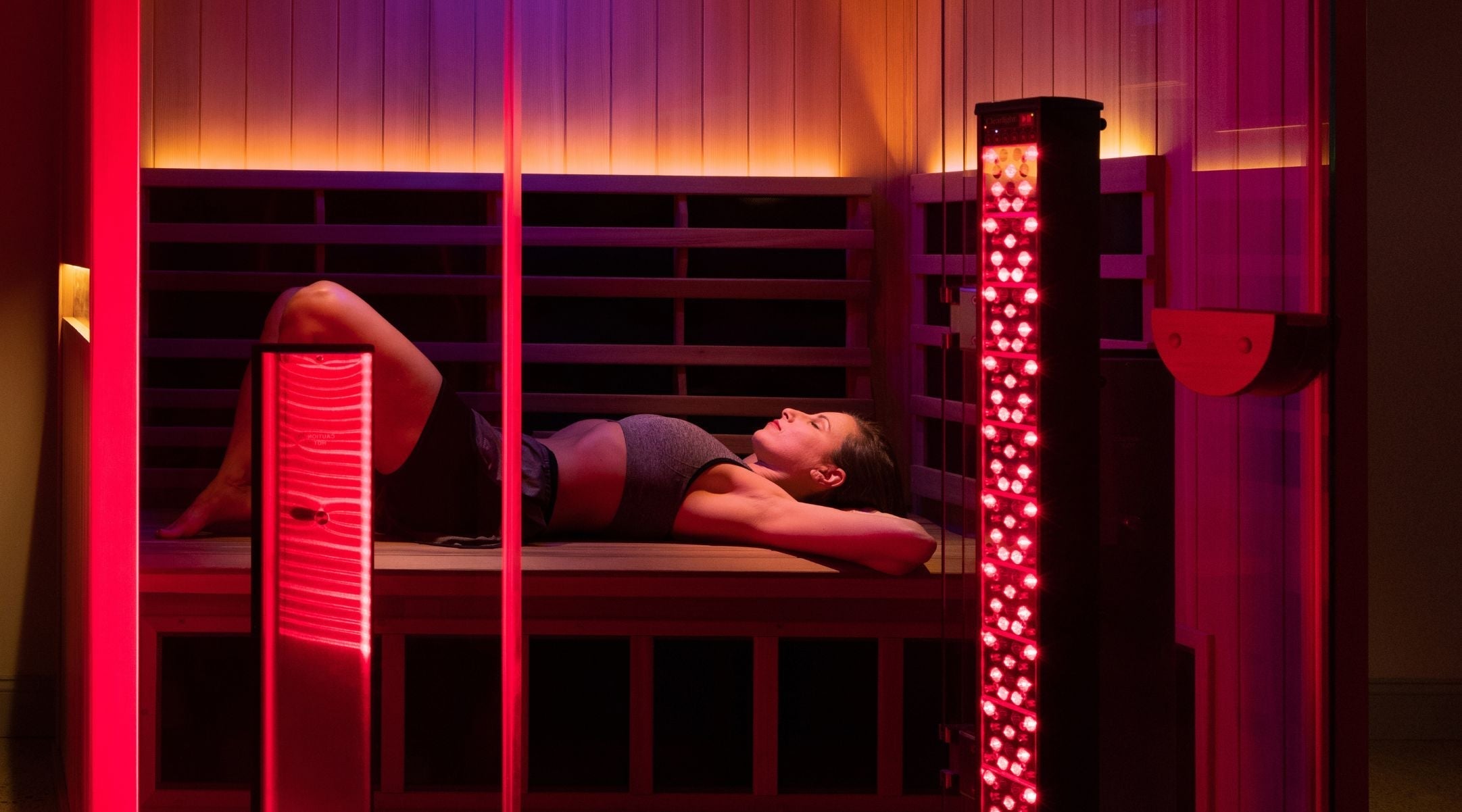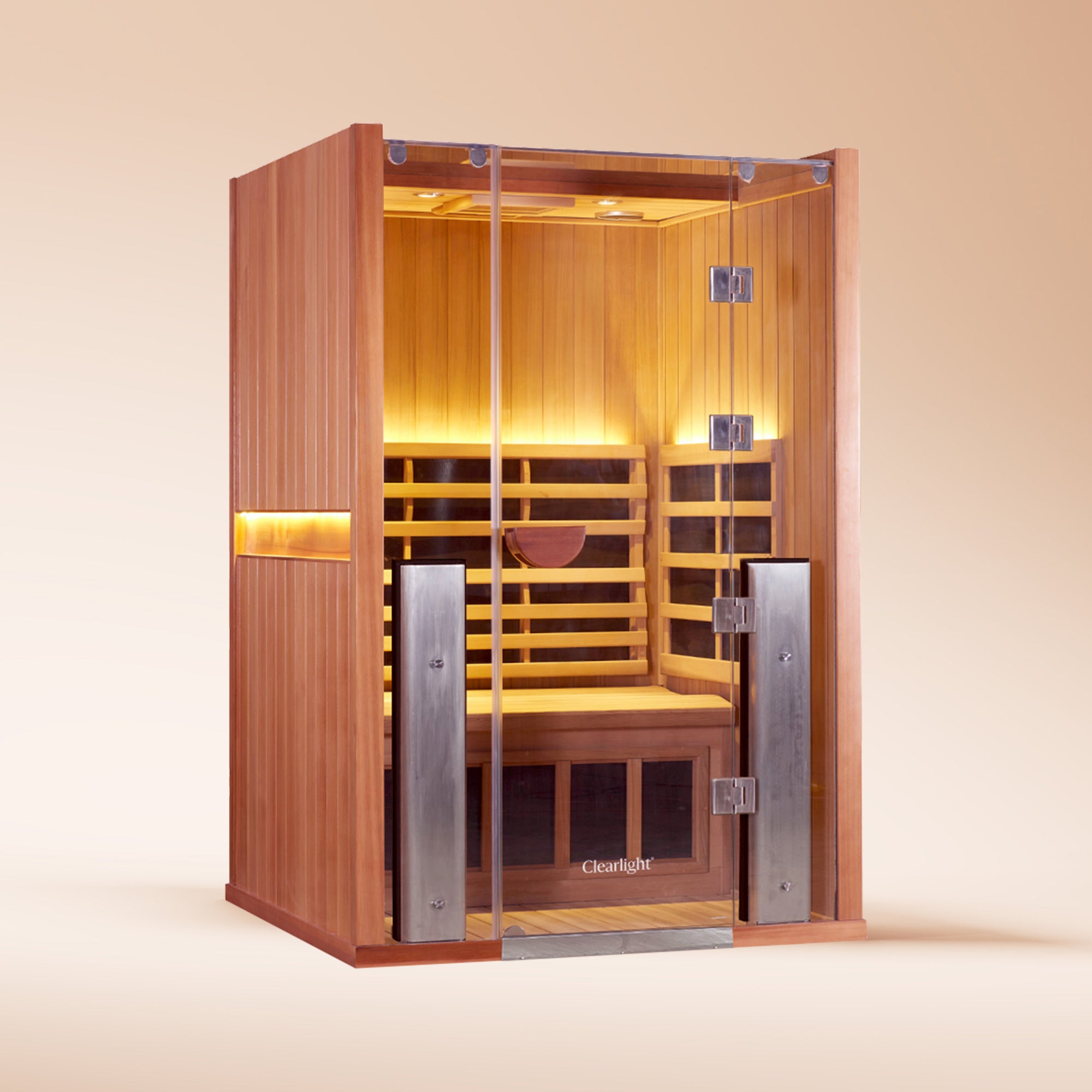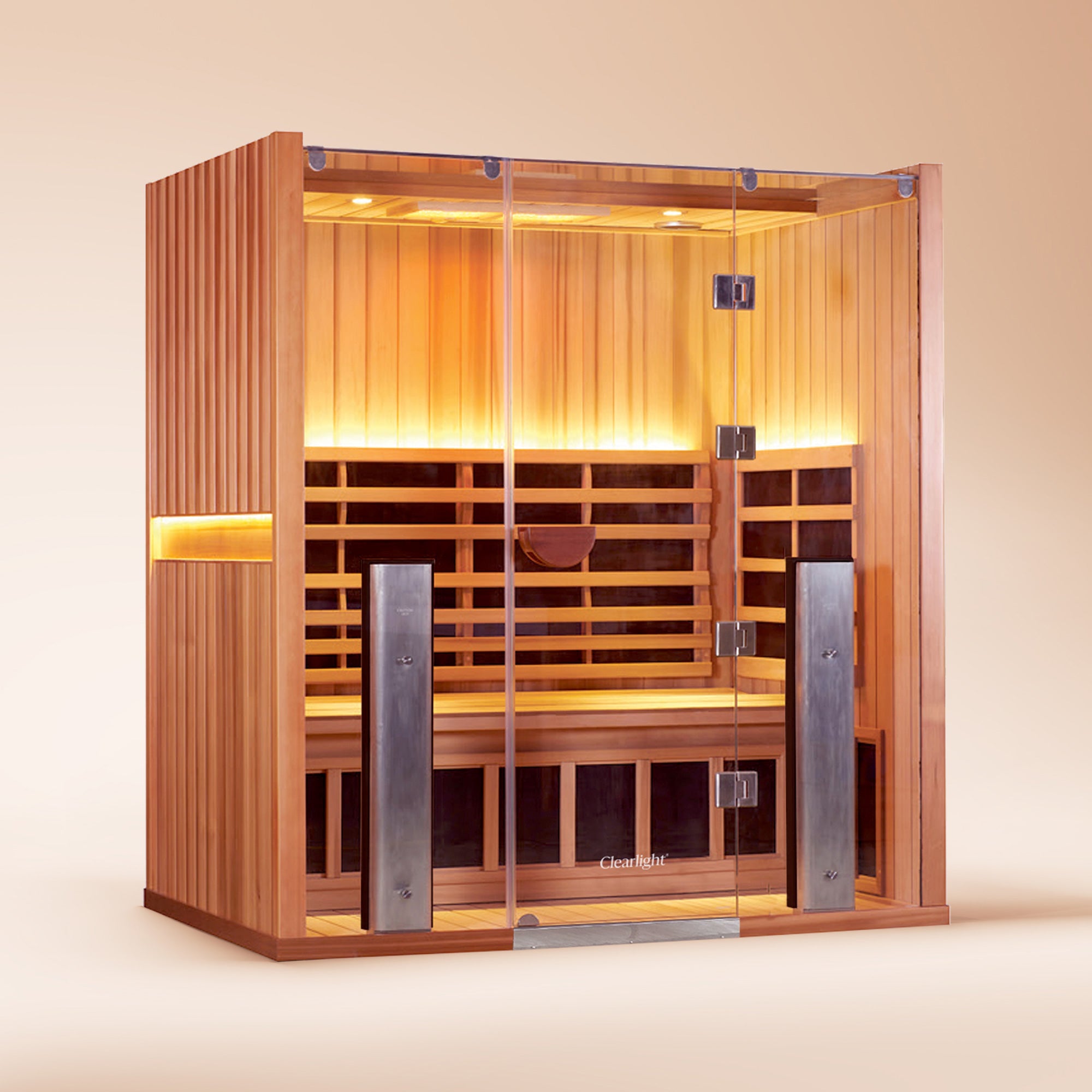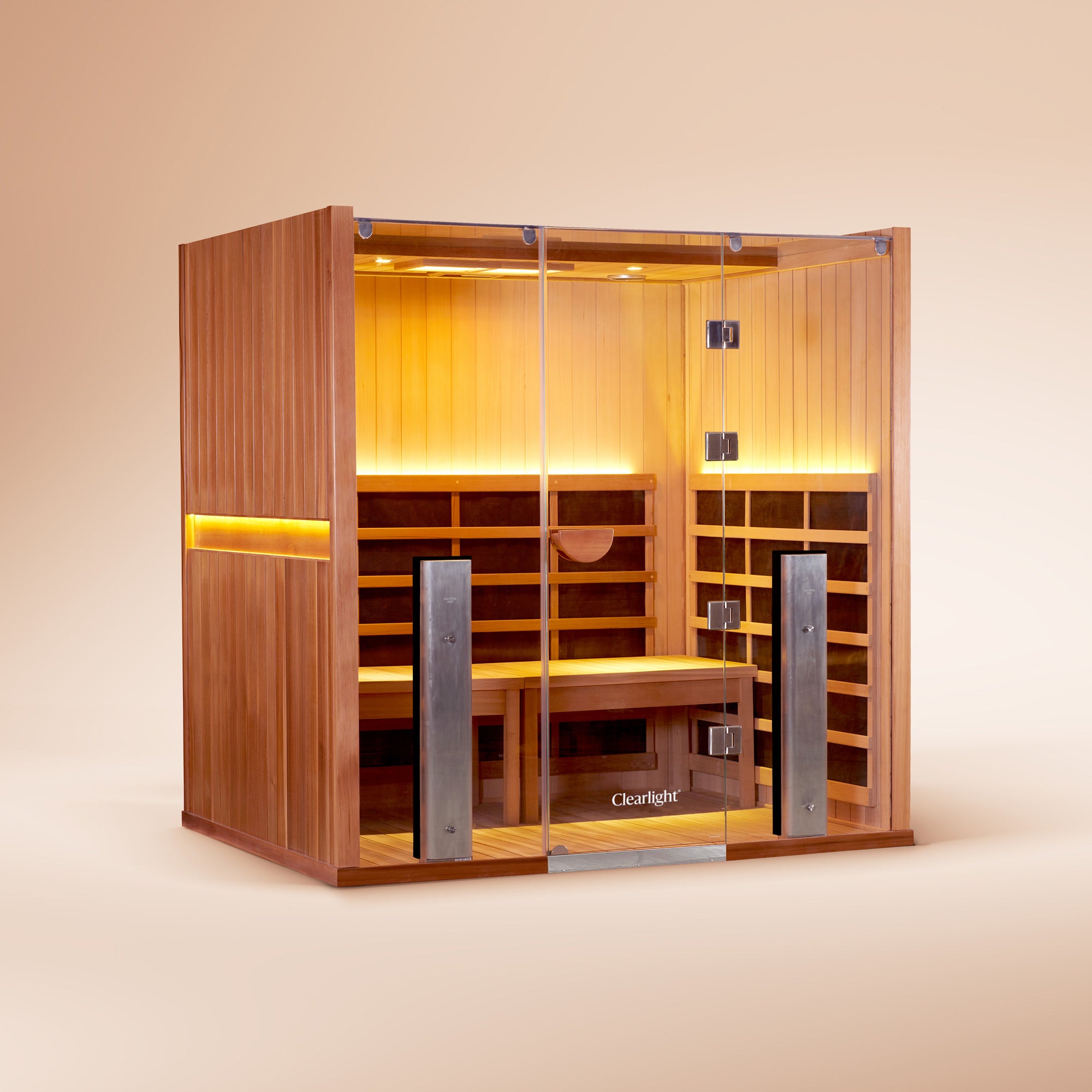Winter brings shorter days, less sunlight, colder temperatures and a noticeable shift in how we feel and function. Many people find their energy and motivation drop, outdoor routines change, and the body needs a little extra care to stay balanced. It is a season where intentional wellbeing practices make a meaningful difference.
This is where red light therapy becomes particularly useful. While red light therapy has benefits all year round, it can be especially supportive during winter when sunlight exposure is limited and the body may be under greater seasonal stress.
This article explains what red light therapy is, how it works, the general benefits, why winter can be the ideal time to use it, how often to use it for best results, and why combining red light therapy with infrared sauna sessions can enhance the overall experience.
What Is Red Light Therapy?
Red light therapy uses specific wavelengths of visible red and near infrared light to deliver gentle, non invasive light to the body. This process is known as photobiomodulation, where light energy interacts with cells in a way that can support natural biological functions. Unlike ultraviolet light, red and near infrared wavelengths do not damage the skin. Instead, they are absorbed by tissues and may influence cellular activity in a beneficial way.
High quality red light therapy devices use LEDs to deliver consistent and concentrated wavelengths into the skin and muscle layers. The experience is calm, non invasive and does not rely on heat. Sessions are typically short, often between ten and twenty minutes, making it easy to integrate into a regular routine.
General Benefits of Red Light Therapy
Scientific research has explored a wide range of potential applications for red and near infrared light. Although results vary between individuals and studies, evidence suggests that red light therapy may support:
Cellular energy production
Red and near infrared wavelengths influence mitochondria, which are responsible for generating energy inside cells. Better cellular energy may support recovery, cognitive function, and general wellbeing.
Circulation and tissue oxygenation
Light can stimulate local circulation and oxygen delivery, which may help the body perform and recover from everyday stress.
Skin support
Red light is commonly used to support healthy skin, with research exploring its role in collagen production, tone, and complexion.
Relaxation and overall wellbeing
Many people describe the experience as relaxing and grounding, similar to meditation or breathwork. Consistency appears to be an important factor in these outcomes.
None of this relies on heat or UV. Instead, the benefit comes from light at very precise wavelengths.
Why Red Light Therapy Is Beneficial in Winter
Winter brings shorter days and reduced natural sunlight exposure. For many people this means less time outdoors, lower vitamin D levels, and fewer opportunities to support mood and energy through natural light.
Red light therapy cannot replace sunlight, but it can provide targeted light exposure that supports the body during winter. Research has explored the connection between light and seasonal wellbeing, including Seasonal Affective Disorder (SAD). While red light therapy is not a treatment for SAD, light exposure in general is known to play an important role in regulating circadian rhythm, energy, sleep cycles, and mood.

During winter, many people use red light therapy to:
-
Maintain consistent light exposure when daylight is limited
-
Support recovery and performance when outdoor exercise decreases
-
Support skin health in colder, drier conditions
-
Add structure and routine that promotes wellbeing
The experience is easy to integrate into a morning or evening wellness routine.
How Often Should You Use Red Light Therapy?
For most users, the best results come from consistency rather than intensity. Many professionals recommend short, regular sessions several times each week. For example:
-
Ten to twenty minutes per session*
-
Three to five sessions per week
Some people prefer to use their device daily for shorter periods. Because red light therapy is non invasive, it is easy to integrate into an existing routine such as meditation, stretching, breathwork, or post exercise cooling.
Results depend on individual lifestyle, health, and baseline activity. As with any wellness practice, consistency over several weeks tends to be more meaningful than a single long session.
*This largely depends on the distance between you and the panel. Shorter distances such as 20cm away will allow you to only use the red light for about 10 minutes. If you’re positioned further away, it’s recommended to increase the session time. If you sit 40cm away it’s best to double the session time. After approx. 10 or 20 minutes (depending on the distance) your cells tend to be saturated in terms of light activation. You can enjoy longer exposure, however it will not yield more results.
The Added Benefits of Combining Red Light Therapy And Infrared Sauna Sessions

Infrared saunas use gentle far and near infrared wavelengths that warm the body directly. This supports relaxation, circulation, recovery, and mental decompression. When used alongside red light therapy, many people report that the combined routine feels deeply restorative.
While both their mechanisms and effects differ, this is why the two modalities work well together:
Light exposure plus heat exposure
Red light delivers targeted light at a cellular level, while infrared therapy supports circulation and relaxation through gentle heat. Together they support two different physiological pathways.
A structured wellness ritual
During winter, establishing a self care routine is essential. A short sauna session followed by red light therapy can create a calming daily or weekly ritual that supports consistency.
Comfort through the colder months
Infrared heat feels comfortable when temperatures are cold outside. Red light therapy adds a calming ambience without heat, allowing the body to cool down gradually.
Flexible timing
Many people start with a sauna session and then finish with red light therapy. Others prefer the reverse. There is no strict rule. The key is consistency.
Creating a Winter Wellness Routine With Red Light Therapy
A winter routine might look like this:
-
Two to four infrared sauna sessions per week
-
Three to five red light therapy sessions per week
-
Hydration, stretching, or breathwork combined with sessions
-
Short sessions in the morning for energy
-
Evening sessions for relaxation
Red light therapy and infrared heat are both compatible with healthy lifestyle practices such as strength training, cold therapy, mindfulness, or balanced nutrition.
As winter progresses, wellbeing often depends on small consistent habits rather than dramatic changes. Red light therapy offers a way to support the body using non invasive light, while an infrared sauna supports circulation, relaxation, and recovery.
Together, they form a routine that fits easily into modern life and continues to offer benefits well beyond the winter months.










How Infrared Heat and Red Light can Enhance Longevity: Mark Bouris Podcast with Clearlight® CEOs
The Combined Benefits of Red Light Therapy and Infrared Saunas